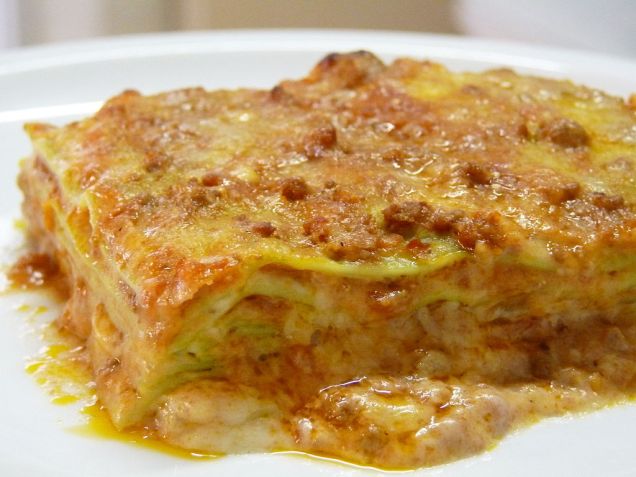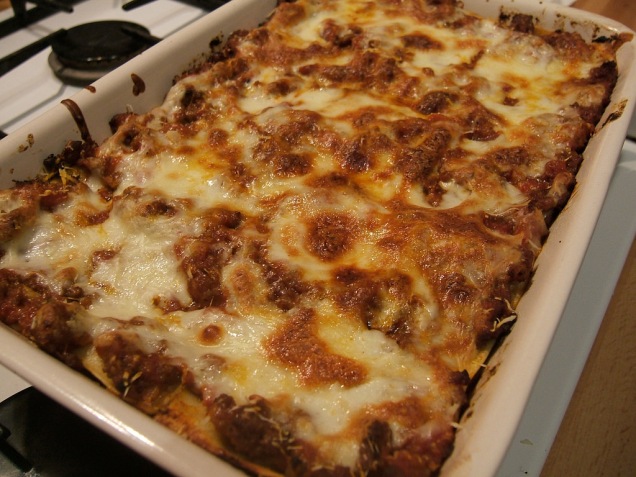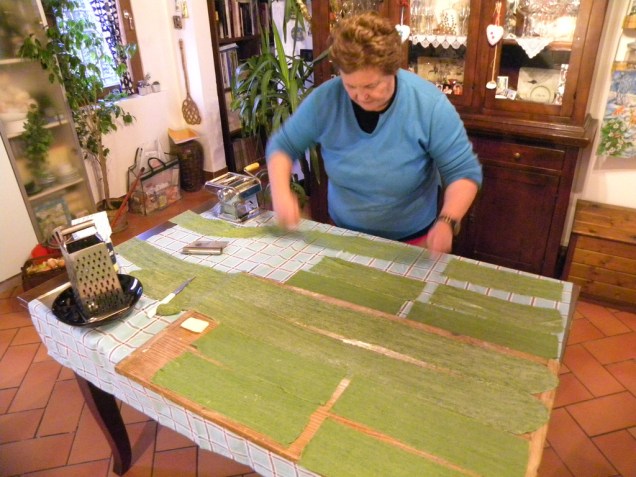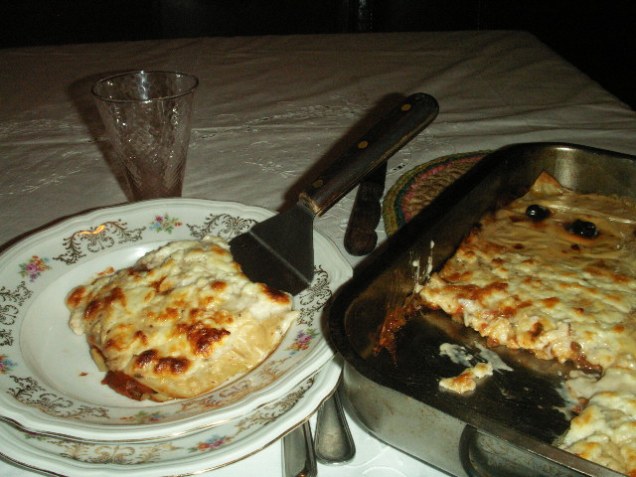 HOT. RED. SPICY. No offense to chefs everywhere, but I like me some red pepper flakes on just about any meal. If you share my love of spicing it up, September is an ideal time to visit Italy. Two festivals in two very different regions highlight the first full weekend each September. Peperoncino in Diamante, Calabria and Nepicante in Nepi, Lazio. These aren’t the red pepper flakes from your local pizzeria; THEY. ARE. HOT. In fact, on just about every trip to Italy, it’s the one item I consistently bring back with me to the States.
HOT. RED. SPICY. No offense to chefs everywhere, but I like me some red pepper flakes on just about any meal. If you share my love of spicing it up, September is an ideal time to visit Italy. Two festivals in two very different regions highlight the first full weekend each September. Peperoncino in Diamante, Calabria and Nepicante in Nepi, Lazio. These aren’t the red pepper flakes from your local pizzeria; THEY. ARE. HOT. In fact, on just about every trip to Italy, it’s the one item I consistently bring back with me to the States.
This time last year I was in my glory. I had just arrived in Italy for “business” research and meetings with two hot pepper festivals on my itinerary. First up was Nepicante in the Lazio town of Nepi; a clever acronym combing the town of Nepi and Piccante (meaning spicy). Set on a field bordering the town, stands featuring red pepper-infused products and fresh food service highlighting the star of the occasion, spicy peperoncino. With live entertainment each night, it’s a wonderful family evening with great food.
Nepi is only a one hour drive north of Rome and near to famous Lake Bracciano. Historic attractions in Nepi include the 15th century Borgia castle, once owned by Lucrezia Borgia and an Acqueduct completed in 1727. Acqua di Nepi is the bottled water from the town spring sold throughout Italy.

Diamante is truly a diamond of the Calabrian coast. Beaches, boardwalk and art along the Mediterranean Sea with dramatic mountains as a backdrop. There are different venues around town with pepper-related activities and stands, but walking along the beautiful “Lungomare” boardwalk on the sea dotted with huts that have just about every type of pepper-infused delight you can think of, is a fun experience during the day and night. In addition to the pepper products, food, southern Italian pastries and artisanal gelato vendors round out the offerings to achieve a full belly and souvenirs. Don’t miss the “n’djua” that Calabria is famous for – a spicy & spreadable pork salumi that accents regional dishes. And if you’re up for it, enter the chili pepper eating contest!
Murals cover many of the walls in Diamante. Around each corner of the centro storico, a different, artistic point of view draws a personal reaction, you may love it, you may not like it all, in either case it’s really cool. Diamante is about a 3 hour drive or train ride south of Naples (train station Diamante-Buonvicino).
DIAMANTE PEPERONCINO FESTIVAL Official Site
WHERE TO STAY
Nepi – Agriturismo La Sorgente Di Nepi https://www.lasorgentenepi.com/main/index.php/en/ Organic farmhouse holiday with structures dating back to the year 700. Locates just outside of Nepi on the via Francigena pilgrim route.
Diamante – B&B dei Murales https://www.bbdeimurales.it/ literally steps from the lungomare boardwalk and festival in Diamante. Extremely clean and convenient, with a cornetto & coffee breakfast included at the Owner’s Bar-Café down the street.
ABOUT LISA
Lisa Vogele is passionate about sharing her love of travel, festivals and genealogy with fellow travelers and enthusiasts. Lisa is the author of Food & Folklore: A Year of Italian Festivals (second edition to be released in Fall 2018), her first installment in a series of travel reference guides about food and folklore festivals in various European countries. Lisa’s Travel Guides is a full-service travel, tour and custom travel agency helping others to go local as a traveler and not a tourist in Europe and beyond. In 2017, Lisa combined her passions and created Travel Your Tree providing research services and travel planning for ancestral destination adventures. Lisa can be reached at lisa@lisastravelguides.com or follow her: Twitter @travelwithlisa; Instagram LisasTravelGuides and travel blogging at Lisa Loves to Travel.
PHOTO CREDITS
Mr. Pepper form the Peperoncino Festival in Diamante – Italy by Events
Borgia Castle Nepi – By Croberto68 – Own work, CC BY-SA 3.0, https://commons.wikimedia.org/w/index.php?curid=14662571
Acqueduct Nepi – By Fabionepi – Own work, CC BY-SA 3.0, https://commons.wikimedia.org/w/index.php?curid=16152331
Town Hall Nepi – By Croberto68 – Own work, CC BY-SA 3.0, https://commons.wikimedia.org/w/index.php?curid=14612936
Nepiccante Festival Photos – Lisa Vogele
Diamante Lungomare Boardwalk – Photo by 1 2 3…Stella! on Foter.com / CC BY-NC-ND
Pepper Displays at Peperoncino Festival Diamante – Lisa Vogele
Murals from Diamante – Lisa Vogele



























![IMG_0564[1]](https://lisalovestotravel.com/wp-content/uploads/2016/07/img_05641.jpg?w=2448&h=3264)
![IMG_0526[1].JPG](https://lisalovestotravel.com/wp-content/uploads/2016/07/img_05261.jpg?w=3264&h=2448)


![IMG_2099[1]](https://lisalovestotravel.com/wp-content/uploads/2017/04/img_20991.jpg?w=636) The last weekend of April each year, Cordoba rings in the spring by throwing thousands of carnations in a spirited procession known as the Battle of the Flowers. At high noon, a cannon sounds as 20 floats decorated in colorful paper flowers are led by a local band, parading down the Paseo de la Victoria in Cordoba, Spain.
The last weekend of April each year, Cordoba rings in the spring by throwing thousands of carnations in a spirited procession known as the Battle of the Flowers. At high noon, a cannon sounds as 20 floats decorated in colorful paper flowers are led by a local band, parading down the Paseo de la Victoria in Cordoba, Spain.![IMG_2110[1]](https://lisalovestotravel.com/wp-content/uploads/2017/04/img_21101.jpg?w=636) The participants on the floats hurl carnation flower heads at the spectators stacked several deep lining the sides of the wide boulevard. The colorful “Battle” ensues and the spectators return the flowery shots back at the floats. The “Battle” started in 1940 but has been taking place consistently since sometime in the 1980’s.
The participants on the floats hurl carnation flower heads at the spectators stacked several deep lining the sides of the wide boulevard. The colorful “Battle” ensues and the spectators return the flowery shots back at the floats. The “Battle” started in 1940 but has been taking place consistently since sometime in the 1980’s.![IMG_2119[1] IMG_2119[1]](https://i0.wp.com/lisalovestotravel.com/wp-content/uploads/2017/04/img_21191.jpg?w=208&h=208&crop=1&ssl=1)
![IMG_2122[1] IMG_2122[1]](https://i0.wp.com/lisalovestotravel.com/wp-content/uploads/2017/04/img_21221.jpg?w=208&h=208&crop=1&ssl=1)
![IMG_2094[1] IMG_2094[1]](https://i0.wp.com/lisalovestotravel.com/wp-content/uploads/2017/04/img_20941.jpg?w=208&h=208&crop=1&ssl=1)





 Spring has already sprung in Agrigento, Sicily. Originally founded as a Greek colony in 581 BC and called Akragas, Agrigento has been, at various times, ruled by Byzantines, Romans and Arabs. The Greek presence is perhaps most felt at the Valle dei Tempi, home to five temple ruins that draw visitors from around the globe.
Spring has already sprung in Agrigento, Sicily. Originally founded as a Greek colony in 581 BC and called Akragas, Agrigento has been, at various times, ruled by Byzantines, Romans and Arabs. The Greek presence is perhaps most felt at the Valle dei Tempi, home to five temple ruins that draw visitors from around the globe.











 Activities for this Carnival period celebration started in January and culminate today and tomorrow with historical parades, feasts and of course, the famous orange fight this afternoon. Aranceri (orange handlers) on fifty carts battle the aranceri from the nine pedestrian teams. Spectators are strongly advised to purchase and wear at all times the beretto frigio; this red stocking cap identifies the innocent onlookers hoping to escape errant oranges. Nets are strung throughout the parade route with designated areas for spectators to gather beneath for protection. The orange throwing spectacle can be seen on Sunday (last night) and Monday nights (today) before dinner, refer to the full program schedule below for parade map and times.
Activities for this Carnival period celebration started in January and culminate today and tomorrow with historical parades, feasts and of course, the famous orange fight this afternoon. Aranceri (orange handlers) on fifty carts battle the aranceri from the nine pedestrian teams. Spectators are strongly advised to purchase and wear at all times the beretto frigio; this red stocking cap identifies the innocent onlookers hoping to escape errant oranges. Nets are strung throughout the parade route with designated areas for spectators to gather beneath for protection. The orange throwing spectacle can be seen on Sunday (last night) and Monday nights (today) before dinner, refer to the full program schedule below for parade map and times.